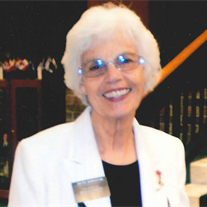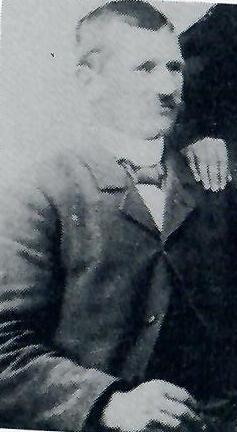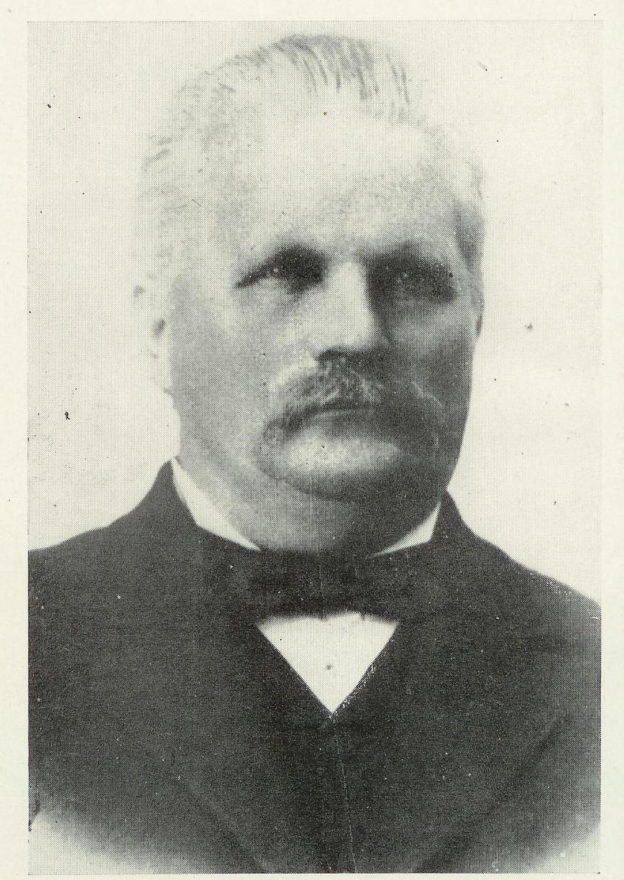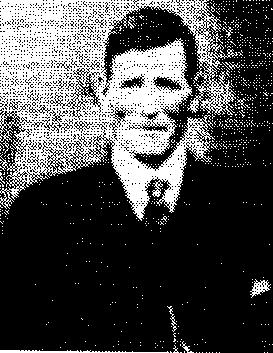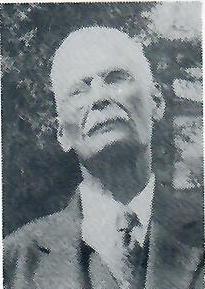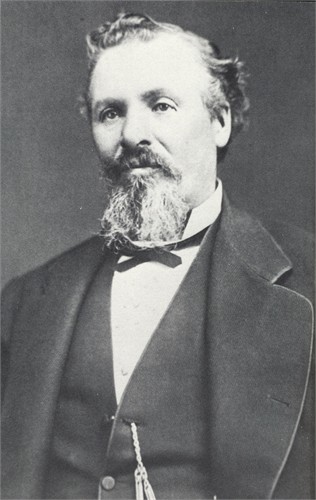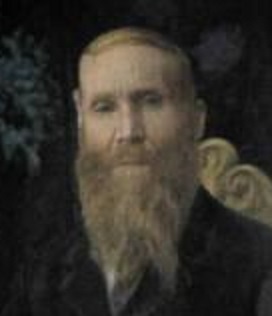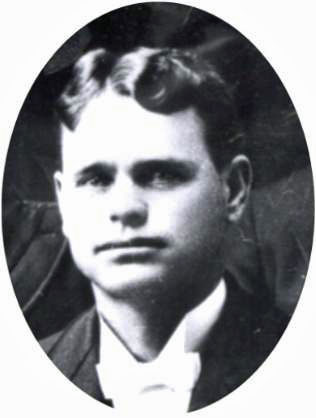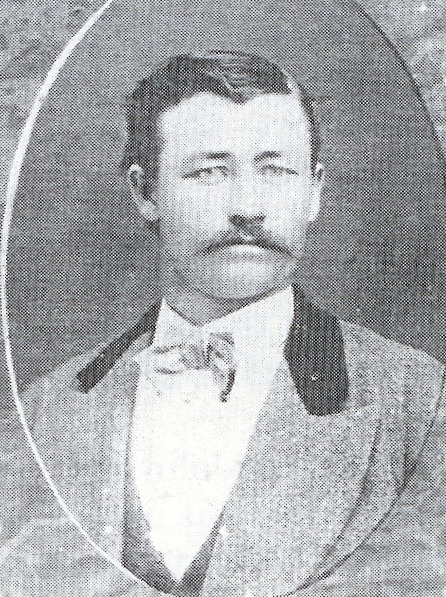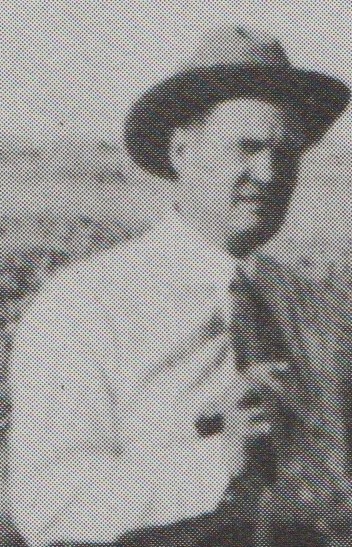John Menzies Macfarlane
1833-1892
Stirling Castle, built on a rocky promontory overlooking the River Forth in the Scottish Highlands, was the birthplace of John Macfarlane, October 11, 1833.
Like his father, he was given the single name of John, to which she later added the middle name of Menzies. Later, two other children were born to John and Anna Bella Sinclair Macfarlane: Ann and Daniel.
By 1842, most of the family had been baptized into the Church of Jesus Christ of Latter-day Saints, and, as a member of the new church, Annabella became one of its most active missionaries. With her older son, John M., she sang hymns and preached on street corners. It is thought by many that this was where he first found his love and gift for music.
When their father died, Annabella moved her children to Glasgow, where she took up midwifery and nursing to support her family. Many years later, John M’s descendants, in an effort to substantiate the theory that he had obtained a university education, discovered that in deed John M. Macfarlane from Stirling had studied at the University member, but the date was 1857, several years after John Menzies Macfarlane had already emigrated to Utah.
That he was a learned man there could be no doubt, but it is now believed that the extensive and varied knowledge he gained beyond the sixth grade was entirely self-taught.
The family was helped to emigrate to Utah through the perpetual emigration fund. On February 11, 1852, they set sail for America on the Ellen Marie. After eight weeks and three days, to Garden City, and being stuck on a sidebar in Mississippi River, they finally arrived in New Orleans on April 7, 1852. By September 1852, they had reached the valley of the Great Salt Lake.
As families moved out of the Salt Lake Valley, the Macfarlane’s went to the Cedar City area, where John Menzies Macfarlane taught school in the meeting house which was built against the wall of the Old Fort. His pay was $2-$5 a quarter for each student. In 1854, a choir was organized at the Old Fort, among its members were John M. and his brother Dan played in numerous productions.
When Brigham Young made a trip to the old Fort, he drove east out of town, and there indicated a new piece of ground which he ordered be surveyed. On the surveying team was John Menzies Macfarlane.
In the midst of all this activity, John Menzies Macfarlane found time to begin showing interest in and Chatterley, a young girl of 17. They were married in the Old Fort, they were later sealed to each other in the Salt Lake Endowment House on November 3, 1857.
Several years after his marriage to a man, John attended the priesthood meeting in which Brigham Young sorted young married men to marry the single women. That night he discussed the matter with him, and much to his surprise— for she had openly expressed her opposition to polygamy— she suggested that she could get along with Agnes Eliza(Tillie) Hayborne, a member of the Cedar City choir which John than directed. But, saying, she doubted that two women could live in harmony in one room. There in the morning John started to work to build another room onto their cabin. He and Tillie were sealed in the Endowment House in Salt Lake City on October 9, 1866.
It is not known when John M. Studied music in composition, but it is known that he owned of well-worn book on harmony instruction. Since nor it was available to accompany the Cedar City choir, he used a tuning fork or pitch pipe to guide the choir members. McGuire traveled throughout the settlements in southern Utah and became well-known. In the late summer of 1868, Erastus Snow called John M. To move to St. George, Utah as director of the St. George choir, which had been started by Charles J. Thomas, the leader of the Salt Lake Tabernacle Choir.
After settling his family in St. George, John Menzies Macfarlane started up a school was some 90 students, among whom was Elizabeth Jane (Lizzie) Adams. The story is told that one day as she jumped over bench, she exposed the rather shapely ankle, and the teacher observed that someday she would make him a good wife.
Having helped to settle some legal questions in Cedar City, John was also sought after in this regard in St. George, and on January 13, 1869, was admitted to practice law in Washington County.
The purpose for which John Menzies Macfarlane had been called to St. George, to direct the choir and to organize a band, expanded with his organization of the St. George Harmonic Society. He also taught singing lessons.
A friend of John’s, Charles L. Walker, a convert from England and blacksmith in St. George, was also a poet, and John took to putting his friend’s poetry to music or adapting the poetry to already-known sacred music.
This Christmas season of 1869 approach, John Menzies Macfarlane began to think about the music available for a special program. He discussed the matter with his friend Charles and asked Charles to write some poetry for which he, John, would compose music. But the poetry Charles wrote did not seem to fit any music that John had in mind. He finally prayed fervently for help and in the middle of one night it came suddenly in a dream. He awakened his wife, Ann, and told her that he thought he had the words in mind as well as the music.
Together they got up. Ann lighted the “bitch” lamp (a large lantern-type lamp) and held it up so that he could see. As he hummed, wrote, erased, and wrote again, she became chilled, as she was only in a thin nightgown, and, thinking out loud, said: “Let it go for now and finish it in the morning.” But he brushed her off and continued writing until he finished.
Because he had asked Charles Walker to collaborate with him in the test, John went immediately to Charles the following morning and showed him the music and words and asked Charles to put his name to the manuscript is author of the words, but Charles refused, saying that the words were not his. John never wrote both words and music to another song. But this, “Far Far Away on Judea’s Plains,” which he expected would be sung for that Christmas program and forgotten, has become a traditional Christmas hymn, not only for the LDS Church but for other denominations as well. It was first published in the Juvenile Instructor on December 15, 1889, 20 years after it was written and the December 1961 issue of The Instructor John M. Macfarlane on its cover composing the music.
John may have written many of the pieces of music to Charles L Walker’s poetry, only one such him is known today: “Dearest Children, God is Near You.”
John Menzies Macfarlane conducted the St. George choir at the groundbreaking ceremony for the St. George temple, and again when the last known was laid. He also conducted acquire in a special high mass for the Catholic Church, which is conducted by special permission of LDS Church Authorities, in the St. George Tabernacle.
At the same time that he was occupied with the choir and with teaching, he was becoming a prominent community leader. In 1876, he was elected to the St. George City Council. As he became not respected, he ran for a number of public offices and was never defeated. In 1878, he was elected probate judge. As a surveyor, his services were constantly in demand. He mapped parts of Cedar City and St. George, private properties for individuals, and, in 1870, was elected Washington County Surveyor.
John had long known the family of Samuel L. Adams, and he had watched Elizabeth Jane (Lizzie) from the day her ankle had caught his attention when she jumped over a bench in his schoolroom. When she became unhappy over the failure of her marriage plans to a Bentley boy, she and her family turned to John to help her. His two wives were concerned that he might be giving Lizzie too much comfort, but they actually had no idea of his intentions to marry Elizabeth Jane Adams, which he did in the St. George Temple on January 30, 1879 — without informing Ann and Tillie until after the ceremony. Whether or not this was responsible for creating the coolness with which the other wives accepted her is not known, but it appears that Lizzie did not have the close bond with Ann and Tillie that they had developed with each other.
With the passage of the Edmunds-Tucker Act, John Menzies Macfarlane became increasingly apprehensive about his polygamous situation, and for a time he and his first wife, Ann, hid out at St. Thomas, near Overton, Nevada. But both ended up contracting malaria and had to return to hid out in and near Cedar City. Having encouraged by Erastus Snow to join the Mormon colonists in Mexico, John finally decided that it was the only thing to do. He invited Ann to accompany him, but her recent unpleasant experience of hiding out decided against another such venture. Tillie was steadfast in wanting to remain with Ann. So, at the latter’s suggestion, he took the youngest wife, Lizzie, and their children and departed, via, Kanab, to there await the arrival of Erastus Snow, who had been attending to business matters in Salt Lake City and would travel with them to Mexico. When a messenger brought news that Brother Snow had succumbed, John M. leaned over his wagon wheel and wept. It was Erastus Snow who had called him to move to St. George. They had been close friends, and it was mainly through his encouragement that the Macfarlanes were undertaking this move to Mexico. But they must go on.
Three months and many miles later, they arrived in Colonia Juarez, a settlement not yet 18 months old. John M. pitched a tent for the family to live in until they could erect a permanent abode on the lot assigned to them southwest across the street from the public square. As they crossed the border, the customs officials allowed them to take in surveying instruments and his organ and their personal belongings after payment of considerable duty, but confiscated their furniture. All they had to sit on in their tent was the spring seat of their wagon.
John Menzies Macfarlane had little ready cash, even though food items were cheap in Mexico; so he and his son Urie dug post holes, hauled rocks for the foundation for the Co-op Store and helped paint the new store. He and Louis Cardon laid up the adobes for the gristmill south of town.
Miles P. Romney helped John M. build a one-room log house on their lot, and although it was bare of furnishings and had only cheesecloth-like material, called “factory,” at the windows, it was much better than the tent. Two days after they moved into the house, their son John Adams was born, but because they now lived in Mexico, they called him Juan.
Soon after their arrival in Colonia, Juarez, John Menzies Macfarlane organized a choir, with rehearsals, as usual, in his home. He also took up surveying again, and he was responsible for surveying the west side of the Juarez Valley and a “city” in Upper Corrales Valley. He was drawn again and again to the beauty of Pacheco and dear friends who lived there, among them the Lunts. He also taught school in Colonia Juarez and he represented the colonists in legal matters at the state capital in Chihuahua City.
In one protracted absence from home, he wrote his wife that she would not know him, for he had lost 32 pounds and now weighed only 206 ½ pounds! He was remembered as a big man with dark hair and a beard; but when he returned to Salt Lake City for conference in October, 1890, and a reunion with his wife Ann, he had lost considerable weight, his beard had been shaved, and he carried a heavy scar below his left eye, the result of his trying to apprehend someone stealing his wheat. The thief had struck him with a pitchfork, the blow not only scarring him, but impairing the vision of his eye.
Although he would have liked to remain in Utah with his family there, he returned to Mexico, and had been home just a month when, Almon B. Johnson accepted an invitation to supper at John M.’s so that the two could discuss some surveying Almon wanted done. As they talked, Almon played with little Juan. The following morning, Almon, his wife, and two of their children were ill with smallpox. They were moved to a pesthouse two miles north of town and Agnes Macdonald and one of her sons and Annie Jonson Hilton and Asa Johnson took care of the quarantined family. In spite of their ministrations, the family died one by one, but miraculously no one else contracted the disease.
In 1890 John M. agreed to operate a store owned by H. L. Hall in Casas Grandes, and he moved Lizzie and the family into the store compound there. With this new venture he dreamed of expanding into a mercantile business in several northern Mexican towns, with members of his family running each store. With this in mind he wrote Ann to sell everything possible to raise the money to send Tillie and her family to him and thereafter to raise money so that she and her family could also join him.
Lizzie was unhappy and afraid in Casas Grandes and prevailed on him to let her move back to Colonia Juarez. With that, and an unsuccessful attempt to open a store in Dublan, his dreams of a thriving mercantile business faded.
Tillie, however, had followed his instructions to ready her family to move to Mexico. She raised much of the money for the trip by cooking for a construction crew and by catering for weddings and feasts in St. George. On November 13, 1891 she and six of her children—her oldest son, Urie, was already with his father in Colonia Juarez—arrived to join the others. IN preparation for her arrival, John Menzies Macfarlane had built a more commodious house than he had for Lizzie. The two houses, a corral, vegetable gardens and a young orchard occupied the town lot in Colonia Juarez.
In February 1892, he returned to the mountains above Pacheco to survey. Because of poisonous snakes and insects in the rocky area in which they camped, the men slept with their boots on, but John M. could not stand his tight boots and so one night removed them to have a good night’s rest. He awoke during the night experiencing terrible pain in one of his toes. He was sure he had been bitten by a snake. In the morning he laboriously put his boots back on, was helped to mount a horse, and somehow rode back to Colonia Juarez, where he collapsed from pain, his foot so swollen that the boot had to be cut off. He was in such misery from the pain, from asthma, and from insatiable thirst which was followed by nausea and vomiting, that he seldom lay down. Rather, he sat on the edge of his bed and cradled his head in his arms on a nearby tabletop.
He felt that if he could only return to St. George to Dr. Higgins, he could be cured. So, when he was well enough to travel, Tillie remained at home in Colonia Juarez to take care of the small children, and Lizzie, Urie, and daughter Caddie accompanied him as far as Deming, from where he traveled by train to Salt Lake City. He seemed some better there, attended spring conference, and was one of a huge crowd who witnessed the laying of the capstone on the Salt Lake Temple.
From Salt Lake City he returned to St. George, where he was ministered to by Dr. Higgins and family members who took turns helping him out to the porch to get fresh air and making him as comfortable as possible. Medications and ministrations were in vain, however, and on June 4, 1892, he died. Telegrams were sent to Tillie and Lizzie in Mexico, but they would not be able to arrive in time for the huge funeral held for him the following day in the St. George Tabernacle, a funeral at which the choir sang, and at which dear friends preached. Shortly thereafter, Tillie and Lizzie disposed of all the family property in Colonia Juarez, except their husband’s transit and organ, and with help from Utah family members and others, returned to southern Utah to live.
Excerpted by Jeanne J. Hatch from Yours Sincerely, John M. Macfarlane, by L.W. Macfarlane, M.D. Published by L. W. Macfarlane, M.D. Salt Lake City, Utah 1980.
Stalwarts South of the Border, Nelle Spilsbury Hatch, page 449

